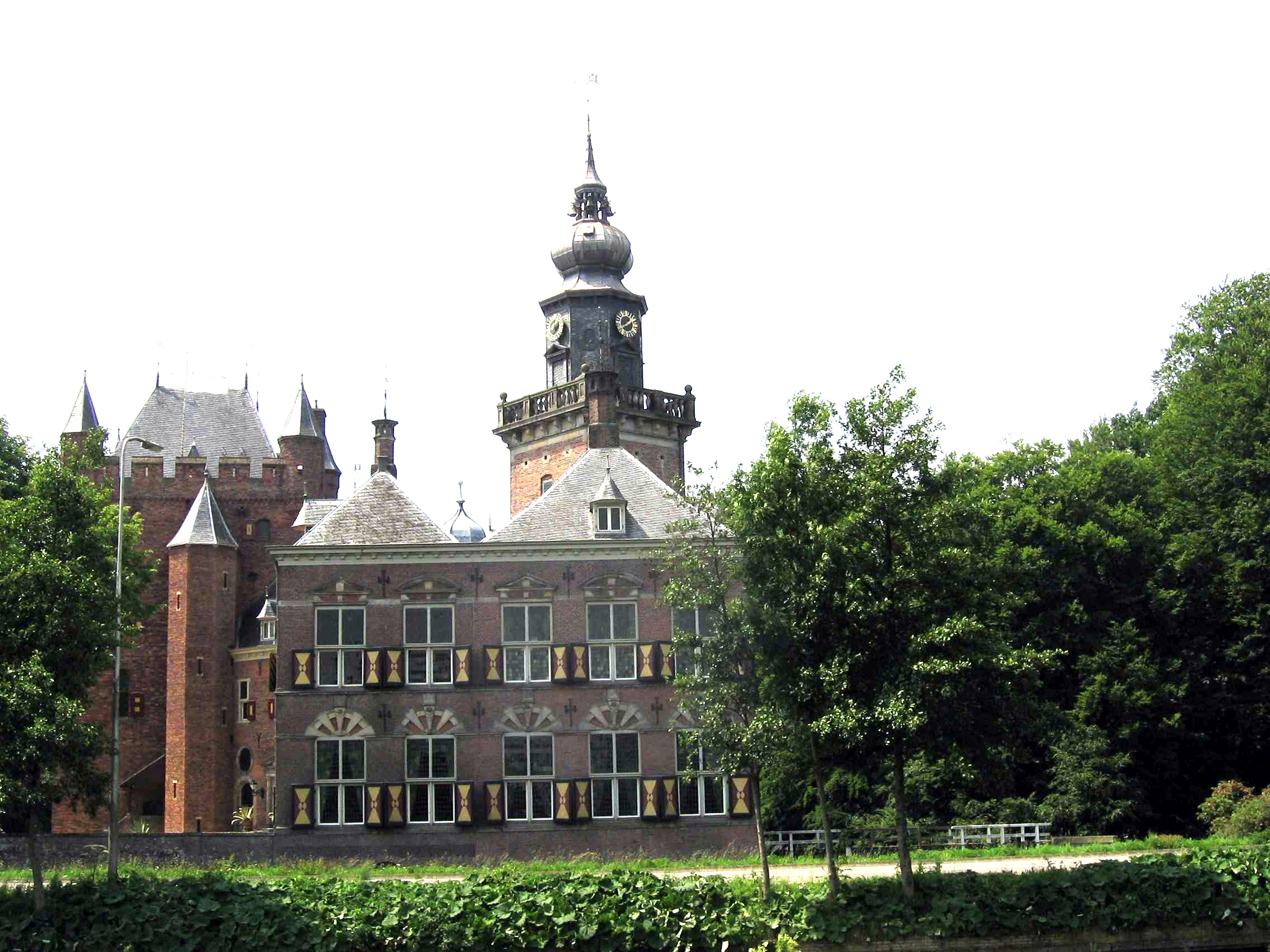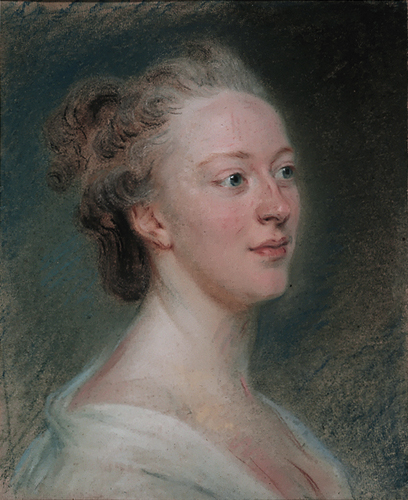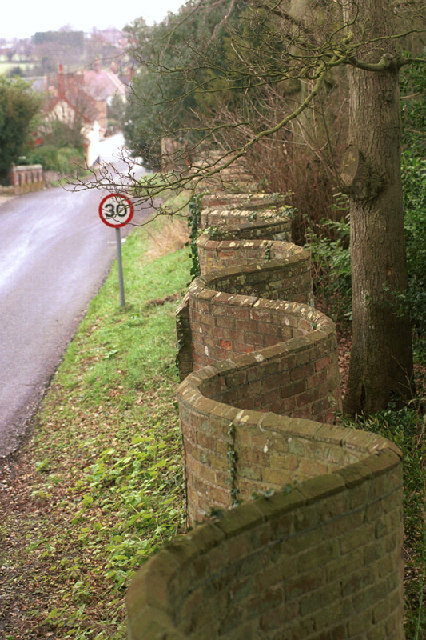|
Slot Zuylen
Zuylen Castle (Dutch: ''Slot Zuylen'' - ) is a Dutch castle at the village of Oud-Zuilen just north of the city of Utrecht. It is located along the river Vecht at the southern end of the Vechtstreek. The castle was originally built in the 13th century by lord van Suilen en Anholt as a simple donjon. In 1422 during the Hook and Cod wars the castle was completely demolished. In 1510 rebuilding started. In 1752 the castle was modified for the last time. It holds a tapestry by the Delft carpet weaver Maximiliaan van der Gught. Its past inhabitants include Steven van der Hagen Steven van der Hagen (Amersfoort, 1563 – 1621) was the first admiral of the Dutch East India Company (VOC). He made three visits to the East Indies, spending six years in all there. He was appointed to the Raad van Indië. Van der Hage ... and Belle van Zuylen. Image:Zuylen.jpg, Slot Zuylen with serpentine wall Image:Slangenmuur.jpg, Serpentine wall (for fruits) Image:Toegangspoort.jpg, Ent ... [...More Info...] [...Related Items...] OR: [Wikipedia] [Google] [Baidu] |
Oud-Zuilen
Oud-Zuilen is a village in the Dutch province of Utrecht. It is a part of the municipality of Stichtse Vecht, and lies about 4 km northwest of Utrecht. It is in an area called the "Vechtstreek". Zuylen Castle is located in the village. History The village was first mentioned 1200 as Sulen and maybe in 1169 as well. The etymology is unclear. It is called Oud (old) to distinguish from Zuilen which is nowadays a neighbourhood of the city of Utrecht. Oud-Zuilen started as a little village probably near the castle. Zuylen Castle dates from at least 1178, and the wooden castle Tule from 883 could have been its predecessor. The van Borselen family who owned the castle were in dispute with the city of Utrecht, and the castle was destroyed in 1422 by angry citizens. In 1520, the castle was rebuilt. The current castle dates from the 18th century and is now a museum. A chapel in Oud-Zuilen was first mentioned in 1050. The Dutch Reformed Church was built in 1654, but lost in a fire in ... [...More Info...] [...Related Items...] OR: [Wikipedia] [Google] [Baidu] |
Utrecht (city)
Utrecht ( , , ) is the fourth-largest city and a municipality of the Netherlands, capital and most populous city of the province of Utrecht. It is located in the eastern corner of the Randstad conurbation, in the very centre of mainland Netherlands, about 35 km south east of the capital Amsterdam and 45 km north east of Rotterdam. It has a population of 361,966 as of 1 December 2021. Utrecht's ancient city centre features many buildings and structures, several dating as far back as the High Middle Ages. It has been the religious centre of the Netherlands since the 8th century. It was the most important city in the Netherlands until the Dutch Golden Age, when it was surpassed by Amsterdam as the country's cultural centre and most populous city. Utrecht is home to Utrecht University, the largest university in the Netherlands, as well as several other institutions of higher education. Due to its central position within the country, it is an important hub for both rail and ... [...More Info...] [...Related Items...] OR: [Wikipedia] [Google] [Baidu] |
Vecht (Utrecht)
The Vecht is a Rhine branch in the Dutch province of Utrecht. It is sometimes called Utrechtse Vecht to avoid confusion with its Overijssel counterpart. The area along the river is called the Vechtstreek. Geography The Vecht originates from the city of Utrecht, where the Kromme Rijn stream forks into two branches: the Leidse Rijn/ Oude Rijn branch to the west and the Vecht to the north. Originally the Vecht branched off south of the city near the Roman fort Fectio, flowing eastwards around the city, but in the 12th century a northern shortcut was dug out. The Vecht meanders north past the towns and villages of Maarssen, Breukelen and Nigtevecht, crosses the border into the province of North Holland, passes the city of Weesp and discharges into the IJmeer (Lake IJ, part of the former Zuiderzee) at Muiden. The Amsterdam-Rijnkanaal ( Amsterdam-Rhine Canal) was dug in the Vecht basin. The Roman historian Tacitus tells us that in the first century CE a Roman fleet sailed due no ... [...More Info...] [...Related Items...] OR: [Wikipedia] [Google] [Baidu] |
Vechtstreek
The Vechtstreek () (Dutch for "Vecht area") is a region in the Dutch provinces of Utrecht and North Holland along the Vecht River between the towns of Utrecht and Amsterdam. Located in the economic heartland of the Netherlands, it is known for its natural environment and history. The Vechtstreek is known for its many vestiges of the Dutch Golden Age, including castles, homes, parks and tea houses. They bear witness to the greatness and wealth of that period, the important commercial role played by the Vecht River and the area's history as a residential area for the nobility and wealthy. Topography The Vecht River begins in the historic centre of Utrecht, where it receives much of its water from the Kromme Rijn, a minor branch of the Lower Rhine. It passes old towns like Oud-Zuilen, Maarssen, Breukelen, Nieuwersluis, Loenen, Vreeland, Nederhorst den Berg, Nigtevecht and Weesp before it flows into the IJsselmeer at Muiden. The landscape to the east and west of the river is ... [...More Info...] [...Related Items...] OR: [Wikipedia] [Google] [Baidu] |
Van Suilen En Anholt
A van is a type of road vehicle used for transporting goods or people. Depending on the type of van, it can be bigger or smaller than a pickup truck and SUV, and bigger than a common car. There is some varying in the scope of the word across the different English-speaking countries. The smallest vans, microvans, are used for transporting either goods or people in tiny quantities. Mini MPVs, compact MPVs, and MPVs are all small vans usually used for transporting people in small quantities. Larger vans with passenger seats are used for institutional purposes, such as transporting students. Larger vans with only front seats are often used for business purposes, to carry goods and equipment. Specially-equipped vans are used by television stations as mobile studios. Postal services and courier companies use large step vans to deliver packages. Word origin and usage Van meaning a type of vehicle arose as a contraction of the word caravan. The earliest records of a van as a vehicle ... [...More Info...] [...Related Items...] OR: [Wikipedia] [Google] [Baidu] |
Donjon
A keep (from the Middle English ''kype'') is a type of fortified tower built within castles during the Middle Ages by European nobility. Scholars have debated the scope of the word ''keep'', but usually consider it to refer to large towers in castles that were fortified residences, used as a refuge of last resort should the rest of the castle fall to an adversary. The first keeps were made of timber and formed a key part of the motte-and-bailey castles that emerged in Normandy and Anjou during the 10th century; the design spread to England, south Italy and Sicily. As a result of the Norman invasion of 1066, use spread into Wales during the second half of the 11th century and into Ireland in the 1170s. The Anglo-Normans and French rulers began to build stone keeps during the 10th and 11th centuries; these included Norman keeps, with a square or rectangular design, and circular shell keeps. Stone keeps carried considerable political as well as military importance and could take ... [...More Info...] [...Related Items...] OR: [Wikipedia] [Google] [Baidu] |
Hook And Cod Wars
The Hook and Cod wars ( nl, Hoekse en Kabeljauwse twisten) comprise a series of wars and battles in the County of Holland between 1350 and 1490. Most of these wars were fought over the title of count of Holland, but some have argued that the underlying reason was because of the power struggle of the bourgeois in the cities against the ruling nobility. The Cod faction generally consisted of the more progressive cities of Holland. The Hook faction consisted for a large part of the conservative noblemen. The origin of the name "Cod" is uncertain, but is most likely a case of reappropriation. Perhaps it derives from the arms of Bavaria, that look like the scales of a fish. The ''Hook'' refers to the hooked stick that is used to catch cod. Another possible explanation is that as a cod grows it tends to eat more, growing even bigger and eating even more, thus encapsulating how the noblemen perhaps saw the expanding middle classes of the time. Aftermath of William IV's reign (1345 ... [...More Info...] [...Related Items...] OR: [Wikipedia] [Google] [Baidu] |
Carpet
A carpet is a textile floor covering typically consisting of an upper layer of pile attached to a backing. The pile was traditionally made from wool, but since the 20th century synthetic fibers such as polypropylene, nylon, or polyester have often been used, as these fibers are less expensive than wool. The pile usually consists of twisted tufts that are typically heat-treated to maintain their structure. The term ''carpet'' is often used in a similar context to the term ''rug'', but rugs are typically considered to be smaller than a room and not attached to the floor. Carpets are used for a variety of purposes, including insulating a person's feet from a cold tile or concrete floor, making a room more comfortable as a place to sit on the floor (e.g., when playing with children or as a prayer rug), reducing sound from walking (particularly in apartment buildings), and adding decoration or color to a room. Carpets can be made in any color by using differently dyed fibers ... [...More Info...] [...Related Items...] OR: [Wikipedia] [Google] [Baidu] |
Steven Van Der Hagen
Steven van der Hagen (Amersfoort, 1563 – 1621) was the first admiral of the Dutch East India Company (VOC). He made three visits to the East Indies, spending six years in all there. He was appointed to the Raad van Indië. Van der Hagen protested against the harsh administration of the administrators, who wanted a monopoly on the clove trade and were willing to fight against their Spanish, Portuguese, English or Asiatic trade competitors in order to get it. Laurens Reael and Steven van der Hagen wrote with disapproval on how the Heren XVII treated the interests and laws of the Maluku population. Both argued that the Company had no right to compel the natives of the Moluccas to sell their spices exclusively to the Dutch, unless the latter could supply them in return with adequate supplies of food and clothing at reasonable prices. They urged that it was better, in the long run, for the Dutch to content themselves with large sales and small profits rather than strive fo ... [...More Info...] [...Related Items...] OR: [Wikipedia] [Google] [Baidu] |
Isabelle De Charrière
Isabelle de Charrière (20 October 174027 December 1805), known as Belle van Zuylen in the Netherlands, née Isabella Agneta Elisabeth van Tuyll van Serooskerken, and adameIsabelle de Charrière (married name) elsewhere, was a Dutch and Swiss writer of the Enlightenment who lived the latter half of her life in Colombier, Neuchâtel. She is now best known for her letters and novels, although she also wrote pamphlets, music and plays. She took a keen interest in the society and politics of her age, and her work around the time of the French Revolution is regarded as being of particular interest. Early life Isabelle van Tuyll van Serooskerken was born in Zuylen Castle in Zuilen near Utrecht in the Netherlands, to Diederik Jacob van Tuyll van Serooskerken (1707–1776), and Jacoba Helena de Vicq (1724–1768). She was the eldest of seven children. Her parents were described by the Scots author James Boswell, then a student in law in Utrecht and one of her suitors, as ... [...More Info...] [...Related Items...] OR: [Wikipedia] [Google] [Baidu] |
Crinkle Crankle Wall
A crinkle crankle wall, also known as a crinkum crankum, sinusoidal, serpentine, ribbon or wavy wall, is an unusual type of structural or garden wall built in a serpentine shape with alternating curves, originally used in Ancient Egypt, but also typically found in Suffolk in England. The alternate convex and concave curves in the wall provide stability and help it to resist lateral forces, leading to greater strength than a straight wall of the same thickness of bricks without the need for buttresses. The phrase "crinkle crankle" is an ablaut reduplication, defined as something with bends and turns, first attested in 1598 (though "crinkle" and "crankle" have somewhat longer histories). History Sinusoidal walls featured extensively in the architecture of Egyptian city of Aten, thought to date from the period of Amenhotep III, some 3,400 years ago (1386–1353 BCE). Other examples exist at Tel el-Retaba and Thebes. As a minor part of a larger system of fortific ... [...More Info...] [...Related Items...] OR: [Wikipedia] [Google] [Baidu] |
Historic House Museums In The Netherlands
History (derived ) is the systematic study and the documentation of the human activity. The time period of event before the invention of writing systems is considered prehistory. "History" is an umbrella term comprising past events as well as the memory, discovery, collection, organization, presentation, and interpretation of these events. Historians seek knowledge of the past using historical sources such as written documents, oral accounts, art and material artifacts, and ecological markers. History is not complete and still has debatable mysteries. History is also an academic discipline which uses narrative to describe, examine, question, and analyze past events, and investigate their patterns of cause and effect. Historians often debate which narrative best explains an event, as well as the significance of different causes and effects. Historians also debate the nature of history as an end in itself, as well as its usefulness to give perspective on the problems of the p ... [...More Info...] [...Related Items...] OR: [Wikipedia] [Google] [Baidu] |
.jpg)







.jpg)